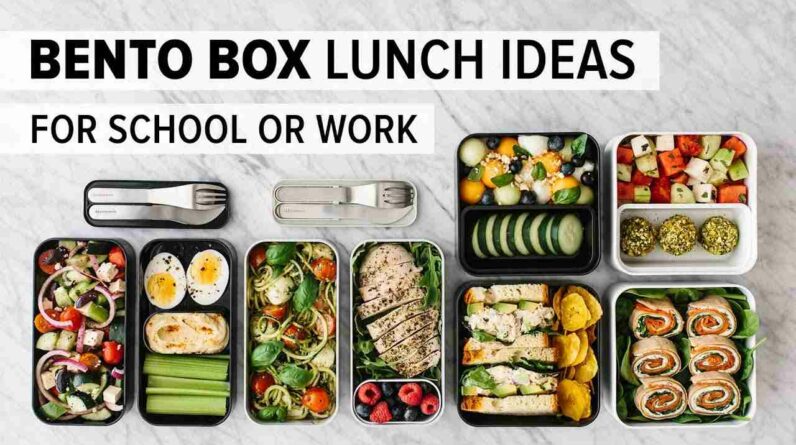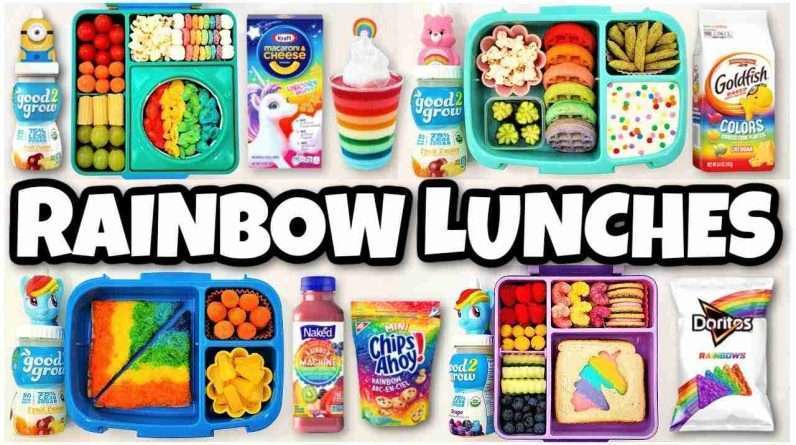Welcome to “24 Hours of Healthy Student Cooking (Cheap and Realistic)” by KWOOWK. In this video, you’ll join a broke college student as they cook and enjoy healthy meals. The recipes are not only affordable but they also require less than 30 minutes to make. These meals are perfect for college students looking for nutritionally balanced options that are approachable and delicious. From soaked oats with grated apple and yogurt for breakfast to chili garlic noodles with tofu for dinner, this video showcases the importance of maximizing taste and nutrition with minimal effort and cost. So, get ready to embark on a day of cooking and eating that will leave you inspired to make healthy choices without breaking the bank. Remember to subscribe to the channel for more content like this!
Introduction
Welcome to 24 Hours of Healthy Student Cooking! In this article, we will take you through an entire day of cooking and eating from the perspective of a broke college student who is trying to stay healthy. We understand that as a student, you may be on a tight budget and have limited time to prepare meals. However, with the right recipes, meal planning, and budgeting strategies, it is possible to enjoy nutritious and delicious meals without breaking the bank. So let’s dive in!
Breakfast Recipes
Meal 1: Soaked oats with grated apple, yogurt, cinnamon, and honey
Start your day off right with a nutritious and filling breakfast. Soaked oats with grated apple, yogurt, cinnamon, and honey is a quick and easy meal that will keep you satisfied until lunchtime. Oats are a great source of carbs and fiber, providing a steady release of energy throughout the morning. Grating an apple adds natural sweetness and a refreshing crunch to the dish. Yogurt adds creaminess and tanginess, while cinnamon adds warmth and depth of flavor. Top it off with a drizzle of honey for extra sweetness. This breakfast comes out to just $1.25 per portion, making it a budget-friendly option.
Meal 2: Quick and easy smoothie with fruits and yogurt
If you’re in a rush or prefer a lighter breakfast, a quick and easy smoothie is the way to go. Simply blend together your favorite fruits, such as bananas, mixed berries, and apples, with some yogurt and a splash of juice or milk. Smoothies are a great way to pack in vitamins, minerals, and antioxidants from fruits while also adding protein and probiotics from yogurt. They can be customized to your liking and are a convenient on-the-go option for busy mornings.
Meal 3: Egg muffins with vegetables and cheese
For a more savory option, try making egg muffins with vegetables and cheese. These portable and protein-packed muffins can be made in advance and enjoyed throughout the week. Simply beat eggs with your choice of vegetables, such as bell peppers, spinach, tomatoes, and onions, and sprinkle in some grated cheese. Pour the mixture into greased muffin tins and bake until set. These egg muffins can be enjoyed hot or cold, making them a versatile and budget-friendly breakfast choice.
Lunch Ideas
Meal 1: Lunch wrap made with chicken thigh, tomatoes, lettuce, and cilantro
For a satisfying and balanced lunch, try making a lunch wrap using chicken thigh, tomatoes, lettuce, and cilantro. Chicken thighs are a cheaper alternative to chicken breast and are more flavorful due to their higher fat content. Season the chicken with your favorite spices and cook it until browned and cooked through. Spread a generous amount of sauce, such as a honey chili sauce made with yogurt, chili powder, garlic powder, chili flakes, and lime juice, on a tortilla. Add the cooked chicken, sliced tomatoes, lettuce, and fresh cilantro, then wrap it all up. This lunch wrap is both nutritious and cheap, costing just $1.65 per wrap.
Meal 2: Veggie-packed sandwich with hummus and avocado
If you’re looking for a plant-based lunch option, a veggie-packed sandwich with hummus and avocado is a great choice. Start by spreading a layer of hummus on your bread of choice. Then, add slices of avocado, along with your favorite vegetables, such as cucumbers, bell peppers, sprouts, and lettuce. You can also add some cheese or a protein source like tofu or tempeh for an extra boost. This sandwich is not only nutritious but also quick to assemble and budget-friendly.
Meal 3: Quinoa salad with roasted vegetables and feta cheese
For a more substantial and hearty lunch, try making a quinoa salad with roasted vegetables and feta cheese. Quinoa is a protein-rich grain that cooks quickly and can be a great base for salads. Roast a variety of vegetables, such as bell peppers, zucchini, onions, and cherry tomatoes, in the oven with some olive oil, salt, and pepper. Meanwhile, cook the quinoa according to package instructions. Combine the roasted vegetables, cooked quinoa, and crumbled feta cheese in a bowl. Drizzle with a simple vinaigrette made with olive oil, lemon juice, and dried herbs. This quinoa salad is packed with nutrients and flavor, making it a satisfying and healthy lunch option.
Snack Options
Meal 1: Bean salad on whole wheat crackers
For a quick and easy snack, try making a bean salad on whole wheat crackers. Start by chopping vegetables like cucumber, tomatoes, and hot peppers into small cubes. Drain and rinse a can of mixed beans, such as kidney beans, chickpeas, and white beans. Mix the vegetables and beans together in a bowl, and add plenty of fresh cilantro, salt, lime juice, and a few capers for extra flavor. Serve the bean salad on whole wheat crackers for a satisfying and nutritious snack.
Meal 2: Greek yogurt with mixed berries and granola
Greek yogurt with mixed berries and granola is a classic and healthy snack option. Greek yogurt is high in protein and calcium, and mixed berries provide antioxidants and vitamins. Top your yogurt with a handful of fresh mixed berries, such as strawberries, blueberries, and raspberries. Add a sprinkle of granola for crunch and sweetness. This snack is not only delicious but also provides a good balance of macronutrients to keep you energized throughout the day.
Meal 3: Energy balls made with oats, peanut butter, and honey
For a homemade and nutritious snack, try making energy balls with oats, peanut butter, and honey. Combine rolled oats, peanut butter, honey, and any additional ingredients you like, such as chia seeds, flaxseeds, or chocolate chips, in a bowl. Mix everything together until well combined. Roll the mixture into small balls and refrigerate for at least 30 minutes to allow them to firm up. Energy balls are a great on-the-go snack that provides a good balance of protein, healthy fats, and complex carbohydrates.

Dinner Recipes
Meal 1: Chili garlic noodles with tofu
For a flavorful and budget-friendly dinner, try making chili garlic noodles with tofu. Start by crumbling tofu into small pieces and sautéing it with green onions, red chili, garlic, ginger, and a splash of dark soy sauce. Once the tofu is crispy and fragrant, add oyster sauce and water to create a flavorful sauce. Toss in cooked ramen noodles and mix everything together. Finish with additional green onions and chili slices for garnish. This spicy and satisfying dish costs only $1.80 per serving and can be customized with your favorite vegetables or protein sources.
Meal 2: Baked salmon with roasted vegetables
If you’re in the mood for a healthy and protein-packed dinner, try making baked salmon with roasted vegetables. Season a salmon fillet with salt, pepper, and your choice of herbs or spices, such as dill, lemon zest, or garlic powder. Place the salmon on a baking sheet and surround it with your favorite vegetables, such as broccoli, carrots, and cherry tomatoes. Drizzle everything with olive oil and season with salt and pepper. Bake in the oven until the salmon is cooked through and the vegetables are tender. This meal provides omega-3 fatty acids from the salmon, along with fiber and vitamins from the roasted vegetables.
Meal 3: Stir-fried vegetables with chicken and brown rice
For a quick and nutritious dinner, try stir-frying vegetables with chicken and serving it with brown rice. Start by slicing chicken breast into strips and marinating it in a sauce made from soy sauce, ginger, garlic, and a pinch of sugar. Meanwhile, stir-fry your favorite vegetables, such as bell peppers, snow peas, carrots, and broccoli, until they are crisp-tender. Remove the vegetables from the pan and stir-fry the marinated chicken until cooked through. Serve the stir-fried chicken and vegetables over cooked brown rice for a complete and balanced meal. This dish is a great way to incorporate a variety of colorful vegetables into your diet.
Meal Prepping Tips
Plan your meals in advance
One of the most important steps in meal prepping is to plan your meals in advance. Take some time each week to decide what recipes you want to make and what ingredients you will need. This will help you stay organized and ensure that you have all the necessary ingredients on hand.
Make a grocery list
Once you have planned your meals, make a grocery list of all the ingredients you will need. This will help you avoid overspending and impulse buying at the grocery store. Stick to your list and only buy what you need for your planned meals.
Batch cook for the week
Batch cooking is a great way to save time and ensure that you have healthy meals ready to go. Choose one or two days a week to cook larger portions of your recipes and divide them into individual containers for easy grab-and-go meals. This will save you time during the week and prevent you from resorting to unhealthy takeout options.
Use versatile ingredients
When meal prepping, choose versatile ingredients that can be used in multiple recipes. For example, brown rice can be used as a base for stir-fries, salads, or grain bowls. This will help you reduce food waste and make the most of your ingredients.
Opt for frozen fruits and vegetables
Frozen fruits and vegetables are often more affordable than fresh produce and can be just as nutritious. They are also convenient as they have a longer shelf life and can be easily incorporated into smoothies, stir-fries, or baked dishes.
Invest in basic kitchen tools
Having a few basic kitchen tools can make meal prepping much easier and more efficient. Invest in a set of good-quality knives, cutting boards, storage containers, and meal prep containers. These tools will make cooking and storing your meals a breeze.
Tips for Cooking on a Budget
Buy in bulk
Buying in bulk is a great way to save money on staple items. Purchase larger quantities of items like grains, beans, and nuts, as they often have a lower price per unit when bought in bulk. Store them in airtight containers to maintain freshness.
Shop for discounted items
Keep an eye out for discounted items at your local grocery store. These can include items that are nearing their expiration date or on sale due to overstock. Be mindful of the expiration dates and use them promptly.
Use coupons and loyalty programs
Take advantage of coupons and loyalty programs offered by grocery stores. Sign up for loyalty cards and clip coupons from newspapers or online sources. These can add up to significant savings over time.
Cook with seasonal produce
Seasonal produce is usually more affordable and fresher than out-of-season produce. Take advantage of what’s in season by incorporating those fruits and vegetables into your meals. They will be more flavorful and cost-effective.
Compare prices at different stores
Don’t be afraid to shop around and compare prices at different grocery stores in your area. Some stores may have better deals on certain items, so it’s worth taking the time to find the best prices.
Make use of leftovers
Leftovers can be transformed into new meals and save you money. Get creative with your leftovers by incorporating them into salads, sandwiches, or stir-fries. This will help reduce food waste and stretch your budget further.
Grow your own herbs
Growing your own herbs can be a cost-effective way to add flavor to your meals. You can start with basic herbs like basil, mint, or parsley, and gradually expand your herb garden. Fresh herbs can elevate the taste of any dish without breaking the bank.
Healthy Eating on Campus
Pack your own lunch
Packing your own lunch is a great way to save money and have more control over the nutritional content of your meals. Invest in a good-quality lunchbox and containers to bring homemade meals to campus. This will help you avoid unhealthy cafeteria options or expensive takeout meals.
Choose options from the salad bar
If your campus has a salad bar or a healthy food station, take advantage of it. Load up on fresh vegetables, lean proteins, and whole grains to create a nutritious and balanced meal. Be mindful of dressings and opt for lighter options like olive oil and vinegar.
Look for healthy snacks at the campus convenience store
If you need a quick snack between classes, look for healthy options at the campus convenience store. Choose items like yogurt, fresh fruit, granola bars, or nuts instead of sugary snacks or processed foods. These options will keep you fueled and focused throughout the day.
Drink plenty of water
Staying hydrated is vital for overall health and concentration. Carry a reusable water bottle with you and aim to drink at least 8 cups of water per day. Drinking water can also help curb cravings and prevent mindless snacking.
Avoid sugary drinks
Sugary drinks like soda, energy drinks, and sweetened coffees can add unnecessary calories and sugar to your diet. Opt for water, unsweetened tea, or infused water with slices of fruits or herbs for flavor.
Utilize the campus gym or fitness center
Many campuses offer free or discounted access to a gym or fitness center. Take advantage of these facilities to stay active and relieve stress. Physical activity can improve your mood, energy levels, and overall well-being.
Maximizing Taste and Nutrition
Experiment with herbs and spices
Herbs and spices are a budget-friendly way to add flavor to your meals without relying on excess salt or added sugars. Experiment with different herbs like basil, thyme, and rosemary, as well as spices like cumin, paprika, and turmeric. They can transform simple dishes into delicious and flavorful meals.
Try different cooking methods (grilling, roasting, steaming)
Varying your cooking methods can add variety and depth to your meals. Instead of always using the same cooking method, try grilling, roasting, or steaming your ingredients. Grilling vegetables can bring out their natural sweetness, while roasting can create a crispy and caramelized texture.
Incorporate a variety of colorful fruits and vegetables
Eating a rainbow of fruits and vegetables ensures a wide range of nutrients in your diet. Aim to include a variety of colors, such as greens, reds, oranges, and purples, in your meals. This will provide different vitamins, minerals, and antioxidants for optimal health.
Include lean protein sources (chicken, fish, tofu)
Protein is essential for muscle repair, satiety, and overall health. Incorporate lean protein sources like grilled chicken, baked fish, or tofu into your meals. These options are often more affordable than fatty cuts of meat and can be cooked in various ways for different flavors and textures.
Choose whole grains over refined grains
Whole grains, such as brown rice, quinoa, and whole wheat bread, are more nutritious than refined grains. They are higher in fiber and provide long-lasting energy. Make the switch to whole grains in your meals by replacing white rice with brown rice or choosing whole wheat bread for sandwiches.
Limit added sugars and processed foods
Added sugars and processed foods can contribute to weight gain, inflammation, and various health issues. Be mindful of the amount of added sugars in your diet and read labels carefully. Opt for whole, minimally processed foods whenever possible.
Budget-Friendly Grocery Shopping List
Here is a budget-friendly grocery shopping list to help you stock up on nutritious ingredients without breaking the bank:
- Proteins: chicken thighs, tofu, canned beans
- Grains: quinoa, brown rice, whole wheat crackers
- Fruits: apples, bananas, mixed berries
- Vegetables: tomatoes, lettuce, cilantro, spinach
- Dairy: yogurt, cheese
- Pantry staples: oats, peanut butter, honey, spices
- Snacks: granola, energy bars
This list includes versatile ingredients that can be used in various meals and snacks throughout the day. By buying these items in bulk or on sale, you can save money and have plenty of options for healthy and affordable meals.
Conclusion
Eating healthy as a student doesn’t have to be expensive or time-consuming. With the right recipes, meal planning, and budgeting strategies, it is possible to enjoy nutritious and delicious meals on a budget. By taking small steps towards healthier eating habits, students can improve their overall well-being and academic performance. So, don’t be afraid to get creative in the kitchen and experiment with different flavors and ingredients. Remember to subscribe to our channel for more affordable and realistic cooking ideas!









